Dust
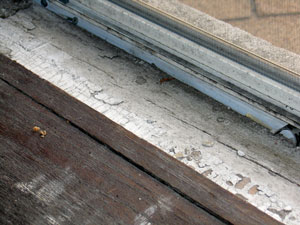 The most common way children are exposed to lead is lead dust. Most of this lead dust comes from chipping and flaking paint as it wears away from doors and windows that are often opened and closed over the years or when paint is scraped or sanded during a home renovation. Any lead-based painted surface in a home that has high traffic or that is often rubbed or bumped such as stairs, railings, doors, windows, banisters, porches, fences, radiators and pipes are the most likely source of toxic lead dust. This lead dust gets into the air and settles on any and all horizontal surfaces when people vacuum, sweep or walk through it. Children will then swallow or breathe this poisonous lead dust in as they eat, play or do other normal hand-to-mouth activities. This is how most young children are exposed to toxic lead dust.
The most common way children are exposed to lead is lead dust. Most of this lead dust comes from chipping and flaking paint as it wears away from doors and windows that are often opened and closed over the years or when paint is scraped or sanded during a home renovation. Any lead-based painted surface in a home that has high traffic or that is often rubbed or bumped such as stairs, railings, doors, windows, banisters, porches, fences, radiators and pipes are the most likely source of toxic lead dust. This lead dust gets into the air and settles on any and all horizontal surfaces when people vacuum, sweep or walk through it. Children will then swallow or breathe this poisonous lead dust in as they eat, play or do other normal hand-to-mouth activities. This is how most young children are exposed to toxic lead dust.
Lead-Based Paint
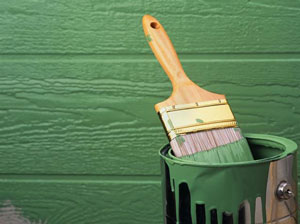 In older homes, especially those built before 1978, the chances are very good it may contain lead-based paint, which is certainly the most dangerous source of lead in the home. Over time, as the paint wears, it can chip or peel off of walls, floors, doors and windows. Even more dangerous is the lead dust that is created from opening and closing these doors or windows inside a home painted with lead-based paint which can easily rub off from this constant friction. This lead dust is all but impossible to see. Children are exposed to this lead dust when they crawl or play around the house and of course when they put their hands, toys, food or other objects covered in lead dust in their mouths. It is extremely important to clean these surfaces often, always with a wet cloth (never sweeping or vacuuming) in order to remove any potential lead dust hazards.
In older homes, especially those built before 1978, the chances are very good it may contain lead-based paint, which is certainly the most dangerous source of lead in the home. Over time, as the paint wears, it can chip or peel off of walls, floors, doors and windows. Even more dangerous is the lead dust that is created from opening and closing these doors or windows inside a home painted with lead-based paint which can easily rub off from this constant friction. This lead dust is all but impossible to see. Children are exposed to this lead dust when they crawl or play around the house and of course when they put their hands, toys, food or other objects covered in lead dust in their mouths. It is extremely important to clean these surfaces often, always with a wet cloth (never sweeping or vacuuming) in order to remove any potential lead dust hazards.
Household Water
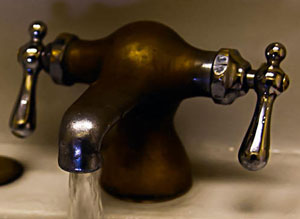 Very often, houses built before 1986 will have actual lead pipes or plumbing parts such as faucets and fittings that may contain lead. Even older water well pumps made with brass or bronze parts may still contain lead. This makes it possible for the lead to leach out of these materials and into your water. Although copper pipes are now used in most new homes, lead solder may still have been used to connect these pipes. In 1986 and 1988, laws were passed to prevent the use of lead in pipes, solder, and other plumbing parts but some new brass faucets and fixtures may still contain trace amounts of lead. Lead gets in the body when people eat or drink food or water with lead in it. For babies who drink formula mixed with water containing lead, this can be especially harmful.
Very often, houses built before 1986 will have actual lead pipes or plumbing parts such as faucets and fittings that may contain lead. Even older water well pumps made with brass or bronze parts may still contain lead. This makes it possible for the lead to leach out of these materials and into your water. Although copper pipes are now used in most new homes, lead solder may still have been used to connect these pipes. In 1986 and 1988, laws were passed to prevent the use of lead in pipes, solder, and other plumbing parts but some new brass faucets and fixtures may still contain trace amounts of lead. Lead gets in the body when people eat or drink food or water with lead in it. For babies who drink formula mixed with water containing lead, this can be especially harmful.
Since lead is more likely to get into warm water that is soft or acidic, always let your tap run for a bit before using it and whenever possible, try to only cook with or drink cold water from your tap.A certified NSF pitcher-style water filter is recommended for any family who is uncertain about the quality of their water and wants to reduce their exposure to lead. Families with children under six or babies that drink water-based formula should especially consider a pitcher filter for all water that is consumed.
Food
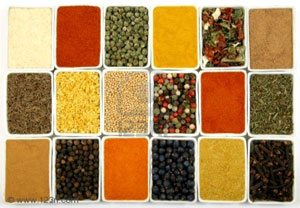 It is possible that food could have been contaminated if it was grown in lead contaminated soil. It has also come to light recently that many of the wrappers from snacks and candies imported from Mexico contain dangerous levels of lead. Food can also become contaminated if it is stored in ceramics, cans or other containers containing lead. Keep in mind that many ceramics made in countries outside of the U.S. may contain lead. If you are not sure or even suspect a container may contain lead, DO NOT use those containers to serve your food. Use glass or plastic containers instead.
It is possible that food could have been contaminated if it was grown in lead contaminated soil. It has also come to light recently that many of the wrappers from snacks and candies imported from Mexico contain dangerous levels of lead. Food can also become contaminated if it is stored in ceramics, cans or other containers containing lead. Keep in mind that many ceramics made in countries outside of the U.S. may contain lead. If you are not sure or even suspect a container may contain lead, DO NOT use those containers to serve your food. Use glass or plastic containers instead.
Lead Glazed China, Ceramics, Leaded Crystal
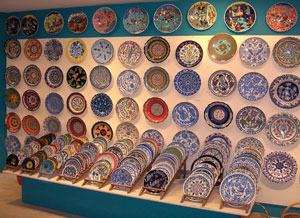 It is very common for lead-glazed pottery to be imported from countries outside the U.S. This makes it possible for lead to seep into foods and liquids that have been stored in lead-glazed ceramics, pottery, china or crystal. Unfortunately, there is no accurate way to tell just by looking at a piece pottery or ceramic whether it contains dangerous amounts of lead. The safest thing is to simply not to use containers that may have been made with lead to store food or beverages. If you are concerned, lead-testing kits can be purchase at many hardware stores or online. Be sure to follow the specific instructions for each individual kit for the most accurate reading.
It is very common for lead-glazed pottery to be imported from countries outside the U.S. This makes it possible for lead to seep into foods and liquids that have been stored in lead-glazed ceramics, pottery, china or crystal. Unfortunately, there is no accurate way to tell just by looking at a piece pottery or ceramic whether it contains dangerous amounts of lead. The safest thing is to simply not to use containers that may have been made with lead to store food or beverages. If you are concerned, lead-testing kits can be purchase at many hardware stores or online. Be sure to follow the specific instructions for each individual kit for the most accurate reading.
Soil
 Prior to the mid 1980’s, it was common practice for oil companies to add lead to their gasoline. Of course the problem was this lead would eventually make its way from the car exhaust system and into the air and soil near roads. This lead remains in the environment today, unfortunately, often at high levels.
Prior to the mid 1980’s, it was common practice for oil companies to add lead to their gasoline. Of course the problem was this lead would eventually make its way from the car exhaust system and into the air and soil near roads. This lead remains in the environment today, unfortunately, often at high levels.
There are also certain industries today such as battery manufacturing, metal smelting and others that still use lead as part of their business. Homes in close proximately to these factories may be in danger since this lead also gets into the air and soil creating a potentially dangerous environment for both children and adults.
As already mentioned, peeling, chipping or flaking lead-based paint on the outside of homes or buildings is another main source of lead in the soil as it deteriorates and falls to the ground, mixing with the topsoil. This is most common when contractors or renovators do not follow proper lead safety rules during a home remodeling. Once again, children are in the most danger of being exposed or poisoned from high levels of lead when hands or toys that have been in the soil end up in their mouths. It is also possible younger children may put plants, rocks or the soil itself directly in their mouths as part of their exploring or playing routine.
Jewelry & Toys
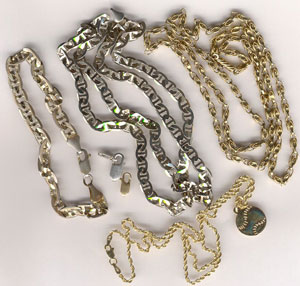 Although lead paint has been banned in the use of consumer products in the United Sates since 1978, of the 49 different categories of children's products recalled since 1990, 59% were recalled because of the presence of lead paint. Over 2 million children's products have been recalled because of lead paint, including toys and candy wrappers. Children's toys and jewelry, including body piercing jewelry, may also contain "elemental lead."
Although lead paint has been banned in the use of consumer products in the United Sates since 1978, of the 49 different categories of children's products recalled since 1990, 59% were recalled because of the presence of lead paint. Over 2 million children's products have been recalled because of lead paint, including toys and candy wrappers. Children's toys and jewelry, including body piercing jewelry, may also contain "elemental lead."
Another loophole that still exists is although toys and other products intended for children which contain a hazardous amount of lead that children can gain access to have been banned, a product can still be made entirely of lead as long as it is ‘covered’ with a protective coating that prevents the lead from becoming "accessible." There is no guarantee that over time, this ‘protective coating’ will not break down or wear through from everyday use creating a very potentially dangerous situation. As an example, in 2003, over 152 million pieces of cheap jewelry sold in vending machines were recalled by the Consumer Product Safety Commission (CPSC) because the coating that was to keep the lead from leaking out proved ineffective. One 4-year-old child suffered from lead poisoning after accidentally swallowing a pendant bought for a quarter in a gumball machine.
Even a small amount of lead that is ingested can unfortunately cause irreversible damage. The CPSC urges all parents to keep their eyes open for metal jewelry in their children's toys and dispose of anything they even suspect may contain lead.
Other Common Lead Sources
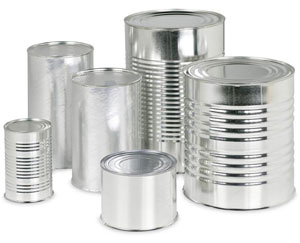 Lead can also often be found in items such as fishing weights or sinkers, antique pewter, crayons from other countries, curtain and window weights, some colors of ink, older playground equipment, some calcium supplements, wheel weights, hair dyes and bullets.
Lead can also often be found in items such as fishing weights or sinkers, antique pewter, crayons from other countries, curtain and window weights, some colors of ink, older playground equipment, some calcium supplements, wheel weights, hair dyes and bullets.
-
Food cans: The United States banned the use of lead solder on cans in 1995. However, lead solder can still be found on cans manufactured in other countries and sold in the U.S. These cans will usually have wide silver-gray solder along the seams which contain the lead. Over time, this lead seeps into the food and this process happens even faster once the can has been opened. Also, foods that are acidic are more likely to absorb lead.
-
Other food items: Many commonly found ‘treats’, especially those imported from Mexico have often been found to contain lead.
-
Mini-blinds: Vinyl mini-blinds and the non-glossy variety from other countries often contain lead. Remember, if you are concerned or suspect lead in any product, you can purchase a lead home testing kit at most hardware stores or by mail order/online to make sure. It is important to follow all testing kit instructions, and note that some testing kits' results may not be accurate.
Hobbies/Jobs
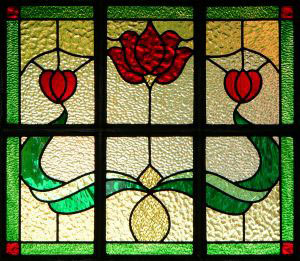 Another common source of lead that is often overlooked is everyday hobbies. These hobbies include making stained glass, lead-glazed pottery, fishing with leaded sinkers and refinishing furniture. There are also many jobs and industries that expose people to lead on a daily basis. This lead often finds its way to the home by means of lead dust on clothes, shoes, skin or hair. Some job examples include constructions, home renovation, painting and refinishing, plumbing, car or radiator repair, electronics, demolition, welding and cutting, municipal waste incineration, lead smelting and refining, battery manufacturing, lead compound manufacturing, rubber products and plastics manufacturing, working in brass or bronze foundries and working with scrap metal.
Another common source of lead that is often overlooked is everyday hobbies. These hobbies include making stained glass, lead-glazed pottery, fishing with leaded sinkers and refinishing furniture. There are also many jobs and industries that expose people to lead on a daily basis. This lead often finds its way to the home by means of lead dust on clothes, shoes, skin or hair. Some job examples include constructions, home renovation, painting and refinishing, plumbing, car or radiator repair, electronics, demolition, welding and cutting, municipal waste incineration, lead smelting and refining, battery manufacturing, lead compound manufacturing, rubber products and plastics manufacturing, working in brass or bronze foundries and working with scrap metal.